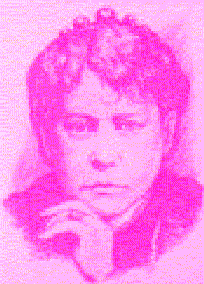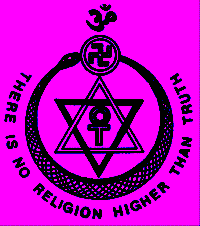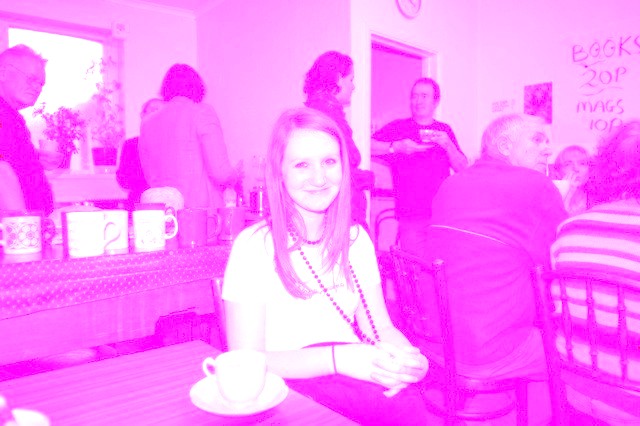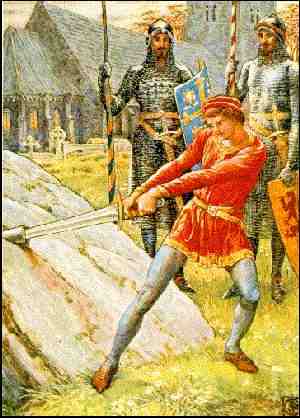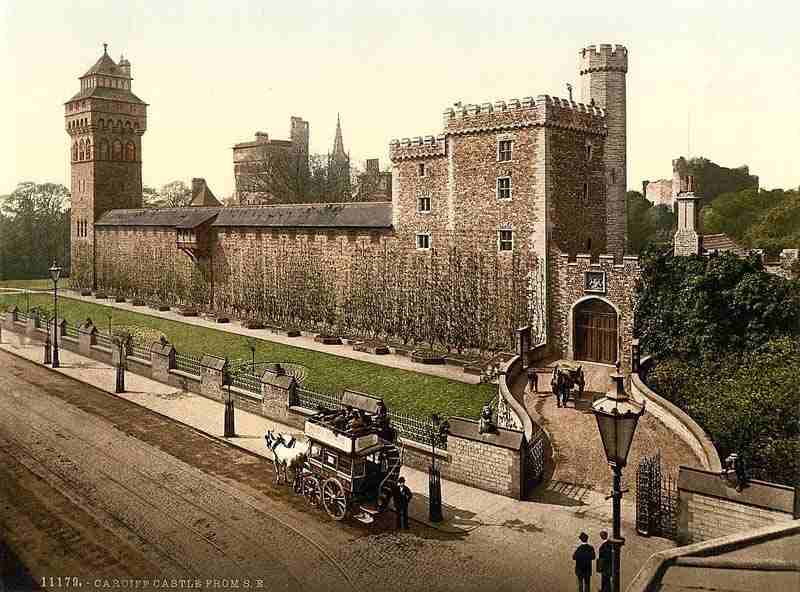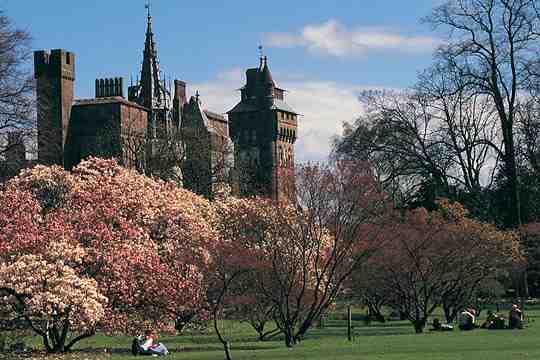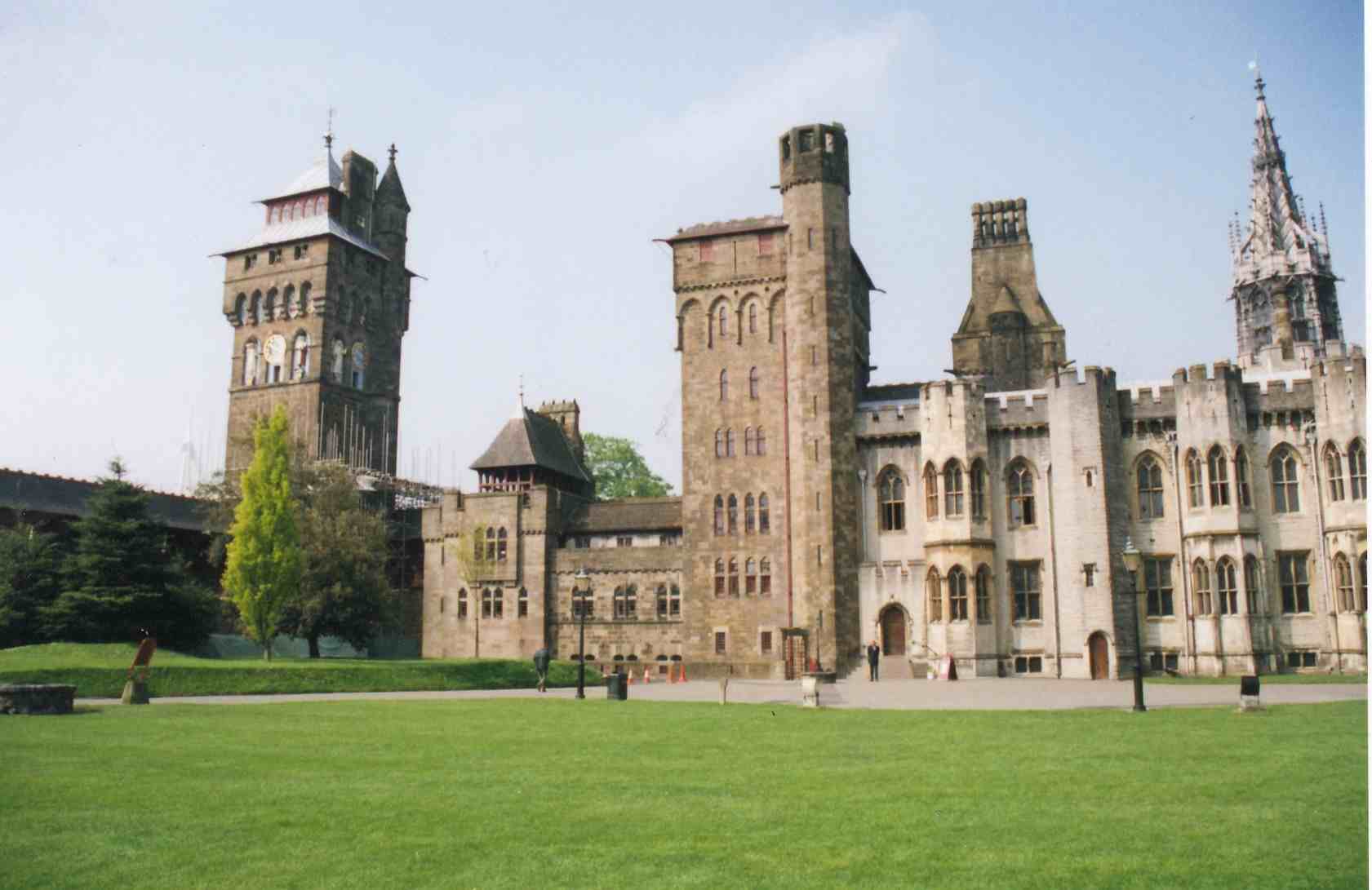
The All
Getting Started in Theosophy
(And it’s all
Free Stuff )
But you don’t
have to live in Wales
to find this guide useful
Helena Petrovna Blavatsky
1831 – 1891
____________________
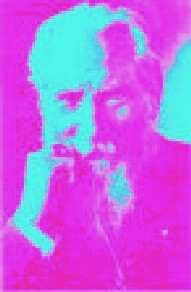
The
Evolution of Life
From
A
Textbook of Theosophy
By
C
All the impulses of life which I have described as
building the interpenetrating worlds came forth from the Third Aspect of the
Deity. Hence in the Christian scheme that Aspect is called “the Giver of Life”,
the Spirit who brooded over the face of the waters of space. In theosophical
literature these impulses are usually taken as a whole, and called the first
outpouring.
When the worlds had been prepared to this extent, and
most of the chemical elements already existed, the second outpouring of life
took place, and this came from the Second Aspect of the Deity. It brought with
it the power of combination. In all the worlds it found existing what may be
thought of as elements corresponding to those worlds. It proceeded to combine
those elements into organisms which it then ensouled, and in this way it built
up the seven kingdoms of nature.
Theosophy recognizes seven kingdoms, because it regards man as separate from
the animal kingdom, and it takes into account several stages of evolution which
are unseen by the physical eye, and gives to them the mediaeval name of
“elemental kingdoms”.
The divine Life pours itself into matter from above,
and its whole course may be thought of in two stages the gradual assumption of
grosser and grosser matter, and then the gradual casting off again of the
vehicles which have been assumed.
The earliest level upon which its vehicles can be
scientifically observed is the mental – the fifth counting from the finer to
the grosser, the first on which there are separated globes. In practical study
it is found convenient to divide this mental world into two parts, which we
call the higher and lower according to the degree of density of their matter.
The higher consists of the three finer subdivisions of mental matter; the lower
part of the other four.
When the outpouring reaches the higher mental world it
draws together the ethereal elements there, combines them into what at the
level correspond to substances, and of these substances builds forms which it
inhabits. We call this the first elemental kingdom.
After a long period of evolution, through different
forms at that level, the wave of life, which is all the time pressing steadily
downwards, learns to identify itself so fully with those forms that, instead of
occupying them and withdrawing from them periodically, it is able to hold them
permanently and make them part of itself, so that now from that level it can
proceed to the temporary occupation of forms at a still lower level. When it
reaches this stage we call it the second elemental kingdom, the ensouling life
of which resides upon the higher mental levels, while the vehicles through
which it manifests are on the lower.
After another vast period of similar length, it is
found that the downward pressure has caused this process to repeat itself; once
more the life has identified itself with its forms, and has taken up its
residence upon the lower mental levels, so that it is capable of ensouling
bodies in the astral world. At this stage we call it the third elemental
kingdom.
We speak of all these forms as finer or grosser
relatively to one another, but all of them are almost infinitely finer than any
with which we are acquainted in the physical world. Each of these three is a
kingdom of nature, as varied in the manifestations of its different forms of
life as in the animal or vegetable kingdom which we know. After a long period
spent in ensouling the forms of the third of these elemental kingdoms it
identifies itself with them in turn, and so is able to ensoul the etheric part
of the mineral kingdom, and becomes the life which vivifies that – for there is
a life in the mineral kingdom just as much as in the vegetable or the animal,
although it is in conditions where it cannotmanifest so freely. In the course
of the mineral evolution the downward pressure causes it to identify itself in
the same way with the etheric matter of the physical world, and from that to
ensoul the denser matter of such minerals as are perceptible to our senses.
In the mineral kingdom we include not only what are usually
called minerals, but also liquids, gases and many etheric substances the
existence of which is unknown to western science. All the matter of which we
know anything is living matter, and the life which it contains is always
evolving. When it has reached the central point of the mineral stage the
downward pressure ceases, and is replaced by an upward tendency; the
outbreathing has ceased and the indrawing has begun.
When mineral evolution is completed, the life has
withdrawn itself again into the astral world, but bearing with it all the
results obtained through its experiences in the physical. At this stage it
ensouls vegetable forms, and begins to show itself much more clearly as what we
commonly call life – plant life of all kinds; and at a yet later stage of its
development it leaves the vegetable kingdom and ensouls the animal kingdom. The
attainment of this level is the sign that it has withdrawn itself still
further, and is now working from the lower mental world. In order to work in
physical matter from that mental world it must operate through the intervening
astral matter; and that astral matter is now no longer part of the garment of
the group soul as a whole, but is the individual astral body of the animal
concerned, as will be later explained.
In each of these kingdoms it not only passes a period
of time which is to our ideas almost incredibly long, but it also goes through
a definite course of evolution, beginning from the lower manifestations of that
kingdom and ending with the highest. In the vegetable kingdom, for example, the
life-force might commence its career by occupying grasses or mosses and end it
by ensouling magnificent forest trees. In the animal kingdom it might commence
with the mosquitoes or with animalculae, and might end with the finest
specimens of the
mammals.
The whole process is one of steady evolution from
lower forms to higher, from the simpler to the more complex. But what is
evolving is not primarily the form, but the life within it. The forms also
evolve and grow better as time passes; but this is in order that they may be
appropriate vehicles for more and more advanced waves of life. When the life
has reached the highest level possible in the animal kingdom, it may then pass
on into the human kingdom, under conditions which will presently be explained.
The outpouring leaves one kingdom and passes to
another, so that if we had to deal with only one wave of this outpouring we
could have in existence only one kingdom at a time. But the Deity sends out a
constant succession of these waves, so that at any given time we find a number
of them simultaneously in operation.
We ourselves represent one such wave; but we find
evolving alongside us another wave which ensouls the animal kingdom – a wave
which came out from the Deity one stage later than we did. We find also the
vegetable kingdom, which represents a third wave, and the mineral kingdom,
which represents a fourth; and occultists know the existence all round us of
three elemental kingdoms, which represent the fifth, sixth and seventh waves.
All these, however, are successive ripples of the same great outpouring from
the Second Aspect of the Deity.
We have here, then, a scheme of evolution in which the
divine Life involves itself more and more deeply in matter, in order that
through that matter it may receive vibrations which could not otherwise affect
it impacts from without, which by degrees arouse within it rates of undulation
corresponding to their own, so that it learns to respond to them. Later on it
learns of itself to generate these rates of undulation, and so becomes a being
possessed of spiritual powers.
We may presume that when this outpouring of life
originally came forth from the Deity, at some level altogether beyond our power
of cognition, it may perhaps have been homogeneous; but when it first comes
within practical cognizance, when it is itself in the intuitional world, but is
ensouling bodies made of the matter of the higher mental world, it is already
not one huge world-soul, but many souls. Let us suppose a homogeneous
outpouring, which may be considered as one vast soul at one end of the scale;
at the other, when humanity is reached, we find that one vast soul broken up
into millions of the comparatively little souls of individual men. At any stage
between these two extremes we find an intermediate condition, the immense
world-soul already subdivided, but not to the utmost limit of possible
subdivision.
Each man is a soul, but not each animal or each plant.
Man, as a soul, can manifest through only one body at a time in the physical
world, whereas one animal soul manifests simultaneously through a number of
animal bodies, one plant-soul through, a number of separate plants. A lion, for
example, is not a permanently separate entity in the same way as a man is. When
the man dies – that is, when he as a soul lays aside his physical body – he
remains himself exactly as he was before, an entity separate from all other
entities.
When the lion dies, that which has been the separate
soul of him is poured back into the mass from which it came – a mass which is
at the same time providing the souls for many other lions. To such a mass we
give the name of “group-soul”.
To such a group-soul is attached a considerable number
of lion bodies – let us say a hundred. Each of those bodies while it lives has
its hundredth part of the group-soul attached to it, and for the time being this
is apparently quite separate, so that the lion is as much an individual during
his physical life as the man; but he is not a permanent individual. When he
dies the soul of him flows back into the group-soul to which it belongs, and
that identical soul-lion cannot be separated from the group.
A useful analogy may help comprehension. Imagine the
group-soul to be represented by the water in a bucket, and the hundred lion
bodies by a hundred tumblers. As each tumbler is dipped into the bucket it
takes out from it a tumblerful of water (the separate soul). That water for the
time being takes the shape of the vehicle which it fills, and is temporarily
separate from the water which remains in the bucket, and from the water in the
other tumblers.
Now put into each of the hundred tumblers some kind of
coloring matter or some kind of flavoring. That will represent the qualities
developed by its
experiences in the separate soul of the lion during
its lifetime. Pour back the water from the tumbler into the bucket; that
represents the death of the lion.
The coloring matter or the flavoring will be
distributed through the whole of the water in the bucket, but will be a much
fainter coloring, a much less pronounced flavor when thus distributed than it
was when confined in one tumbler. The qualities developed by the experience of
one lion attached to that group-soul are therefore shared by the entire
group-soul but in a much lower degree.
We may take out another tumblerful of water from that
bucket, but we can never again get exactly the same tumblerful after it has
once been mingled with the rest. Every tumblerful taken from that bucket in the
future will contain some traces of the coloring or flavoring put into each
tumbler whose contents have been returned to the bucket. Just so the qualities
developed by the experience of a single lion will become the common property of
all lions who are in the future to be born from that group-soul, though in a
lesser degree than that in which they existed in the individual lion who
developed them.
That is the explanation of inherited instincts; that
is why the duckling which has been hatched by a hen takes to the water
instantly without needing to be shown, how to swim; why the chicken just out of
its shell will cower at the shadow of a hawk; why a bird which has been
artificially hatched, and has never seen a nest, nevertheless knows how to make
one, and makes it according to the traditions of its kind.
Lower down the scale of animal life enormous numbers
of bodies are attached to a single group-soul – countless millions, for
example, in the case of some of the smaller insects; but as we rise in the
animal kingdom the number of bodies attached to a single group-soul becomes
smaller and smaller, and therefore the differences between individuals become
greater.
Thus the group-souls, gradually break up. Returning to
the symbol of the bucket, as tumbler after tumbler of water is withdrawn from
it, tinted with some sort of coloring matter and returned to it, the whole
bucketful of water gradually
becomes richer in color. Suppose that by imperceptible
degrees a kind of vertical film forms itself across the center of the bucket,
and gradually solidifies itself into a division, so that we have now a right
half and a left half to the bucket, and each tumblerful of water which is taken
out is returned always to the same half from which it came.
Then presently a difference will be set up, and the
liquid in one half of the bucket will no longer be the same as that in the
other. We have then practically two buckets, and when this stage is reached in
a group-soul it splits into two, as a cell separates by fission. In this way,
as the experience grows ever richer, the group-souls grow smaller but more
numerous, until at the highest point we arrive at man with his single
individual soul, which no longer returns into a group but remains always
separate.
One of the life-waves is vivifying the whole of a
kingdom; but not every group-soul in that life-wave will pass through the whole
of that kingdom from the bottom to the top. If in the vegetable kingdom a
certain group-soul has ensouled forest trees, when it passes on into the animal
kingdom it will omit all the lower stages – that is, it will never inhabit
insects or reptiles, but will begin at once at the level of the lower mammals.
The insects and reptiles will be vivified by group-souls which have for some
reason left the vegetable kingdom at a much lower level than the forest tree. In
the same way the group-soul which has reached the highest levels of the animal
kingdom, will not individualize into primitive savages but into men of somewhat
higher type, the primitive savage being recruited from group-souls which have
left the animal
kingdom at a lower level.
Group-souls at any level or at all levels arrange
themselves into seven great types, according to the Minister of the Deity
through whom their life has poured
forth. These types are clearly distinguishable in all the kingdoms, and the
successive forms taken by any one of them form a connected series, so that
animals, vegetables, minerals and the varieties of the elemental creatures may
all be arranged into seven groups, and the life coming along one of those lines
will not diverge into any of the others.
No detailed list has yet been made of the animals,
plants or minerals from this point of view; but it is certain that the life
which is found ensouling a mineral of a particular type will never vivify a
mineral of any other type than its own, though within that type it may vary.
When it passes on to the vegetable and animal kingdoms it will inhabit
vegetables and animals of that type and of no other, and when it eventually
reaches humanity it will individualize into men of that type and of no other.
The method of individualization is the raising of the
soul of a particular animal to a level so much higher than that attained by its
group-soul that it can no longer return to the latter. This cannot be done with
any animal, but only with those whose brain is developed to a certain level,
and the method usually adopted to acquire such mental development is to bring
the animal into close contact with man.
Individualization, therefore, is possible only for
domestic animals, and only for certain kinds even of those. At the head of each
of the seven types stands one kind of domestic animal – the dog for one, the
cat for another, the elephant for a third, the monkey for a fourth, and so on.
The wild animals can all be arranged on seven lines leading up to the domestic
animals; for example, the fox and the wolf are obviously on the same line with
the dog, while the lion, the tiger and the leopard equally obviously lead up to
the domestic cat; so that the group-soul animating a hundred lions mentioned
some time ago might at a later stage of its evolution have divided into, let us
say, five group-souls each animating twenty cats.
The life-wave spends a long period of time in each
kingdom; we are now only a little past the middle of such an aeon, and
consequently the conditions are not favourable for the achievement of that
individualization which normally comes only at the end of a period. Rare
instances of such attainment may occasionally be observed on the part of some
animal much in advance of the average. Close association with man is necessary
to produce this result. The animal if kindly treated develops devoted affection
for his human friend, and also unfolds his intellectual powers in trying to
understand that friend and to anticipate his wishes. In addition to this, the
emotions and the thoughts of man act constantly upon those of the animal, and
tend to raise him to a higher level both emotionally and intellectually. Under
favourable circumstances this development may proceed so far as to raise the
animal altogether out of touch with the group to which he belongs, so that his
fragment of a group-soul becomes capable of responding to the outpouring which
comes from the First Aspect of the Deity.
For this final outpouring is not like the others, a
mighty outrush affecting thousands or millions simultaneously; it comes to each
one individually as that one is ready to receive it. This outpouring has
already descended as far as the intuitional world; but it comes no farther than
that until this upward leap is made by the soul of the animal from below; but
when that happens this Third Outpouring leaps down to meet it, and in the
higher mental world is formed an ego, a permanent individuality – permanent,
that is, until, far later in his evolution, the man transcends it and reaches
back to the divine unity from which he came. To make this ego, the fragment of
the group-soul (which has hitherto played the part always of ensouling force)
becomes in its turn a vehicle, and is itself ensouled by that divine Spark
which has fallen into it from on high. That Spark may be said to have been
hovering in the monadic world over the group-soul through the whole of its
previous evolution, unable to effect a junction with it until its corresponding
fragment in the group-soul had developed sufficiently to permit it. It is this
breaking away from the rest of the group-soul and developing a separate ego
which marks the distinction between the highest animal and the lowest man.
______________________
The All Wales
Guide to
Getting Started in Theosophy
_______________________
Find
out more about
Theosophy
with these links
Cardiff
Theosophical Society meetings are informal
and there’s always a cup of tea afterwards
The Cardiff Theosophical Society Website
The National Wales Theosophy Website
Theosophy Cardiff’s Instant Guide
One liners and quick explanations
H P Blavatsky is usually the only
Theosophist that most people have ever
heard of. Let’s put that right
The Voice of the Silence Website
Dave’s
Streetwise Theosophy Boards
If you run a Theosophy Study Group,
please feel free to use any material
on this site
If you run a
Theosophy Group you can use
this as an
introductory handout
It’s all “water
under the bridge” but everything you do
makes an imprint
on the Space-Time Continuum.
An Independent Theosophical Republic
Links to Free Online Theosophy
Study Resources; Courses, Writings,
The main criteria
for the inclusion of
links on this
site is that they have some
relationship
(however tenuous) to Theosophy
and are
lightweight, amusing or entertaining.
Topics include
Quantum Theory and Socks,
Dick Dastardly and Legendary Blues Singers.
Lentil burgers, a
thousand press ups before breakfast and
the daily 25 mile
run may put it off for a while but death
seems to get most
of us in the end. We are pleased to
present for your
consideration, a definitive work on the
subject by a
Student of Katherine Tingley entitled
This is for everyone, you don’t have to live
in Wales to make good use of this Website
The Seven Principles of Man
By
Annie Besant
No
Aardvarks were harmed in the
The Spiritual Home of Urban Theosophy
The Earth Base for Evolutionary Theosophy
Reincarnation
This
guide has been included in response
to the
number of enquiries we receive on this
subject
at Cardiff
Theosophical Society
From A Textbook
of Theosophy By C W Leadbeater
How We Remember our Past Lives
Life after Death & Reincarnation
The
Slaughter of the Battle of the Somme 1916 leads to
a
great demand by the public for lectures on Reincarnation
Classic Introductory Theosophy Text
A Text Book of Theosophy
By C
What Theosophy Is From the Absolute to Man
The Formation of a Solar System The Evolution of Life
The Constitution of Man After Death
Reincarnation
The Purpose of Life The Planetary Chains
The Result of Theosophical Study
The Occult World
By
Alfred Percy Sinnett
The Occult World is an treatise on the
Occult and Occult Phenomena, presented
in
readable style, by an early giant of
the Theosophical Movement.
Preface to the American Edition Introduction
Occultism and its Adepts The Theosophical Society
First Occult Experiences Teachings of Occult Philosophy
Later Occult Phenomena Appendix
by
Annie
Besant
THE PHYSICAL PLANE THE ASTRAL PLANE
KÂMALOKA
THE MENTAL PLANE DEVACHAN
THE BUDDHIC AND NIRVANIC PLANES
THE THREE KINDS OF KARMA COLLECTIVE KARMA
THE LAW OF SACRIFICE MAN'S
ASCENT
______________________
Annie Besant Visits Cardiff 1924
National Wales
Centre for Theosophy
Blavatsky Wales
Theosophy Group
Selection of H P Blavatsky’s Writings
Theosophy Birmingham (England)
The Birmingham Annie Besant Lodge
Quotes
from the Writings of
Helena
Petrovna Blavatsky
The Secret Doctrine , Volume 2, Page 100
It is only by the attractive force of the contrasts
that the two opposites — Spirit and Matter — can be cemented together on
Earth, and, smelted in the fire of self-conscious experience and suffering, find themselves
wedded in Eternity.
The Secret Doctrine , Volume 2, Page 108
It is the motive, and the motive alone, which makes
any exercise of power become black, malignant, or white, beneficent Magic. It is
impossible to employ spiritual forces if there is the slightest tinge of
selfishness remaining in the operator .... The powers and forces of animal
nature can equally be used by the selfish and revengeful, as by the unselfish
and the all-forgiving; the powers and forces of spirit lend themselves only to the
perfectly pure in heart — and this is Divine Magic.
Isis Unveiled,
Volume 1, Page 36
The Secret Doctrine , Volume 3, Page 14
Even ignorance is better than
Head-learning with no Soul-wisdom to illuminate and guide it.
The Voice of the Silence, Page 43
Annotation - The Path, May, 1888
The Secret Doctrine , Proem [Volume 1], Page 35
Isis Unveiled, Volume 1, Page 210
The Secret Doctrine , Volume 1, Page 134
incarnation of
his God; and when the sense of personal responsibility will be so
Isis Unveiled, Volume 2, Page 374
It is the
motive, and the motive alone, which makes any exercise of power become
The Secret Doctrine , Volume 2, Page 498
Isis Unveiled, Volume 1, Page 36
From strength to
strength, from the beauty and perfection of one plane to the
greater beauty
and perfection of another, with accessions of new glory, of fresh
knowledge and
power in each cycle, such is the destiny of every Ego, which thus
becomes its own
saviour in each world and incarnation.
The Key to Theosophy, Page 105
The Secret Doctrine , Volume 1, Page 69
The mind
receives indelible impressions even from chance acquaintance or persons
Isis Unveiled, Volume 1, Page 311
The Key to Theosophy, Page 228
Tekels Park to be Sold to a Developer
Concerns about
the fate of the wildlife as
Tekels Park is to be Sold to a
Developer
Concerns are raised about the fate of
the wildlife as
The Spiritual Retreat, Tekels Park in
Camberley,
Surrey, England is to be sold to a
developer.
Tekels Park is a
50 acre woodland park, purchased
for the Adyar Theosophical Society in England
in 1929.
In addition to
concern about the park, many are
worried about the future of the Tekels Park
Deer
as they are not a
protected species.
Confusion as the
Theoversity moves out of
Tekels Park to Southampton,
Glastonbury &
Chorley in Lancashire while the
leadership claim
that the Theosophical Society will
carry on using
Tekels Park despite its sale to a developer
Anyone planning a
“Spiritual” stay at the
Tekels Park Guest
House should be aware of the sale.
Tekels Park & the Loch Ness Monster
A Satirical view
of the sale of Tekels Park
in Camberley,
Surrey to a developer
The Toff’s Guide to the Sale of Tekels Park
What the men in
top hats have to
say about the sale
of Tekels Park
________________________
The Theosophy Cardiff
Glastonbury Pages
The Theosophy Cardiff Guide to
The Theosophy Cardiff Guide to
The Theosophy Cardiff Guide to
The Terraced Maze of Glastonbury Tor
Glastonbury and
Joseph of Arimathea
The Grave of King Arthur & Guinevere
Views of Glastonbury High Street
The Theosophy Cardiff Guide to
Guide to the
Theosophy Wales
King Arthur Pages
Arthur draws the Sword from the Stone
The Knights of The Round Table
The Roman Amphitheatre at Caerleon,
Eamont Bridge, Nr Penrith, Cumbria, England.
Geoffrey of Monmouth
(History of the Kings of Britain)
The reliabilty of this work has long been a subject of
debate but it is the first definitive account of Arthur’s
Reign
and one which puts Arthur in a historcal context.
and his version’s political agenda
According to Geoffrey of Monmouth
The first written mention of Arthur as a heroic figure
The British leader who fought twelve battles
King Arthur’s ninth victory at
The Battle of the City of the Legion
King Arthur ambushes an advancing Saxon
army then defeats them at Liddington Castle,
Badbury, Near Swindon, Wiltshire, England.
King Arthur’s twelfth and last victory against the Saxons
Traditionally Arthur’s last battle in which he was
mortally wounded although his side went on to win
No contemporary writings or accounts of his life
but he is placed 50 to 100 years after the accepted
King Arthur period. He refers to Arthur in his inspiring
poems but the earliest written record of these dates
from over three hundred years after Taliesin’s death.
Pendragon Castle
Mallerstang Valley, Nr Kirkby Stephen,
A 12th Century Norman ruin on the site of what is
reputed to have been a stronghold of Uther Pendragon
From
wise child with no earthly father to
Megastar
of Arthurian Legend
History of the Kings of Britain
Drawn from the Stone or received from the Lady of the Lake.
Sir Thomas Malory’s Le Morte d’Arthur has both versions
with both swords called Excalibur. Other versions
5th & 6th Century Timeline of Britain
From the departure of the Romans from
Britain to the establishment of sizeable
Anglo-Saxon Kingdoms
Glossary of
Arthur’s uncle:- The puppet ruler of the Britons
controlled and eventually killed by Vortigern
Amesbury, Wiltshire, England. Circa 450CE
An alleged massacre of Celtic Nobility by the Saxons
History of the Kings of Britain
Athrwys / Arthrwys
King of Ergyng
Circa 618 - 655 CE
Latin: Artorius; English: Arthur
A warrior King born in Gwent and associated with
Caerleon, a possible Camelot. Although over 100 years
later that the accepted Arthur period, the exploits of
Athrwys may have contributed to the King Arthur Legend.
He became King of Ergyng, a kingdom between
Gwent and Brycheiniog (Brecon)
Angles under Ida seized the Celtic Kingdom of
Bernaccia in North East England in 547 CE forcing
Although much later than the accepted King Arthur
period, the events of Morgan Bulc’s 50 year campaign
to regain his kingdom may have contributed to
Old Welsh: Guorthigirn;
Anglo-Saxon: Wyrtgeorn;
Breton: Gurthiern; Modern Welsh; Gwrtheyrn;
*********************************
An earlier ruler than King Arthur and not a heroic figure.
He is credited with policies that weakened Celtic Britain
to a point from which it never recovered.
Although there are no contemporary accounts of
his rule, there is more written evidence for his
existence than of King Arthur.
How Sir Lancelot slew two giants,
From Sir Thomas Malory’s Le Morte d’Arthur
How Sir Lancelot rode disguised
in Sir Kay's harness, and how he
From Sir Thomas Malory’s Le Morte d’Arthur
How Sir Lancelot jousted against
four knights of the Round Table,
From Sir Thomas Malory’s Le Morte d’Arthur
Quick Explanations with Links to More Detailed Info
What is Theosophy ? Theosophy Defined (More Detail)
Three Fundamental Propositions Key Concepts of Theosophy
Cosmogenesis Anthropogenesis Root Races
Ascended Masters After Death States
The Seven Principles of Man Karma
Reincarnation Helena Petrovna Blavatsky
Colonel Henry Steel Olcott William Quan Judge
The Start of the Theosophical
Society
History of the Theosophical
Society
Theosophical Society Presidents
History of the Theosophical
Society in Wales
The Three Objectives of the Theosophical
Society
Explanation of the Theosophical
Society Emblem
The Theosophical Order of
Service (TOS)
Glossaries of Theosophical Terms
Index of Searchable
Full Text Versions of
Definitive
Theosophical Works
H P Blavatsky’s Secret Doctrine
Isis Unveiled by H P Blavatsky
H P Blavatsky’s Esoteric Glossary
Mahatma Letters to A P Sinnett 1 - 25
A Modern Revival of Ancient Wisdom
(Selection of Articles by H P Blavatsky)
The Secret Doctrine – Volume 3
A compilation of H P Blavatsky’s
writings published after her death
Esoteric Christianity or the Lesser Mysteries
The Early Teachings of The Masters
A Collection of Fugitive Fragments
Fundamentals of the Esoteric Philosophy
Mystical,
Philosophical, Theosophical, Historical
and Scientific
Essays Selected from "The Theosophist"
Edited by George
Robert Stow Mead
From Talks on the Path of Occultism - Vol. II
In the Twilight”
Series of Articles
The In the Twilight”
series appeared during
1898 in The
Theosophical Review and
from 1909-1913 in The Theosophist.
compiled from
information supplied by
her relatives and friends and edited by A P Sinnett
Letters and
Talks on Theosophy and the Theosophical Life
Obras Teosoficas En Espanol
Theosophische Schriften Auf Deutsch
Try these if you don’t live in Wales
and are looking for a
Local Theosophy Group or Centre
UK Listing of Theosophical Groups
____________________________
___________________________
Cardiff Theosophical
Society in Wales
Cardiff, Wales, UK. CF24 – 1DL
_____________________________
Cardiff Picture Gallery
Cardiff Millennium Stadium
The Hayes Cafe
Outside Cardiff Castle Circa 1890
Church Street
Cardiff View
Royal
The Original Norman Castle which stands
inside
the Grounds of the later
Inside the Grounds at
Cardiff Street Entertainment
Cardiff Indoor Market
Cardiff
Theosophical Society in Wales
Wales Theosophy Links Summary
All Wales Guide to Theosophy Instant
Guide to Theosophy
Theosophy Wales Hornet Theosophy
Wales Now
Cardiff
Theosophical Archive Elementary Theosophy
Basic
Theosophy Theosophy in Cardiff
Theosophy
in Wales Hey Look! Theosophy in Cardiff
Streetwise
Theosophy Grand
Tour
Theosophy Aardvark
Theosophy Starts Here
Theosophy 206 Biography of William Q Judge
Theosophy Cardiff’s Face Book of Great Theosophists
Theosophy Evolution Theosophy Generally Stated
Biography of Helena Petrovna Blavatsky
______________________________________________
Foundation of the Original Theosophical Society 1875
The first Theosophical Society was
founded in New York on
November 17th 1875 by Helena
Petrovna Blavatsky,
Colonel Henry Steel Olcott, William Quan
Judge and others.
The Theosophical Movement now consists of
a diverse range of
organizations which carry the
Theosophical Tradition forward.
Cardiff Theosophical Society has been
promoting Theosophy since 1908
______________________________________________
मूल थियोसोफिकल सोसायटी 1875 फाउंडेशन
पहले थियोसोफिकल सोसायटी को न्यूयॉर्क में स्थापित किया गया था
17 नवंबर Helena Petrovna Blavatsky द्वारा 1875,
कर्नल Henry Steel Olcott, William Quan Judge और दूसरों.
थियोसोफिकल आंदोलन अब एक विविध रेंज के होते हैं
आगे थियोसोफिकल परंपरा ले जो संगठनों.
कार्डिफ थियोसोफिकल सोसायटी 1908 के बाद से ब्रह्मविद्या को बढ़ावा देने की गई है
_______________________________________
Mūla
thiyōsōphikala sōsāyaṭī 1875
phā'uṇḍēśana
Pahalē thiyōsōphikala sōsāyaṭī kō
n'yūyŏrka mēṁ sthāpita kiyā gayā thā
17 Navambara Helena Petrovna Blavatsky dvārā 1875,
Kamala Henry Steel Olcott, aura dūsarōṁ.
Thiyōsōphikala āndōlana aba ēka vividha
rēn̄ja kē hōtē haiṁ
Āgē thiyōsōphikala paramparā lē jō
saṅgaṭhanōṁ.
Kārḍipha thiyōsōphikala sōsāyaṭī 1908
kē bāda sē brahmavidyā
kō baṛhāvā
dēnē kī ga'ī hai
_____________________________________________
THEOSOPHY MEETINGS
Please click here for Current Theosophical Events in
Cardiff
